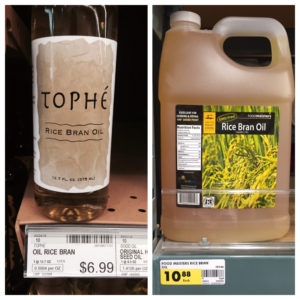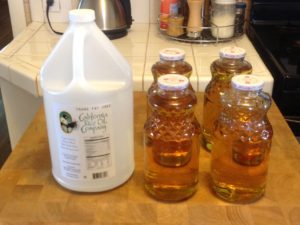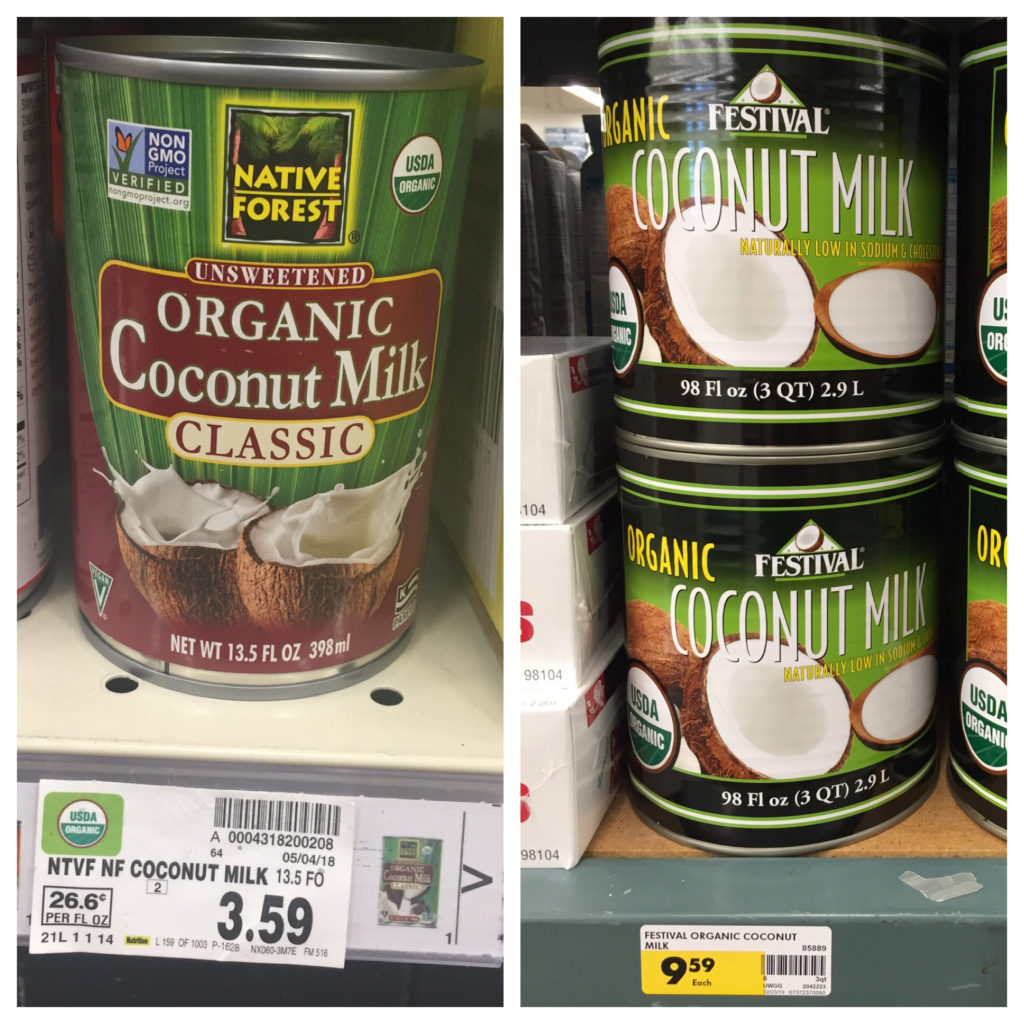One of my favorite retail versus wholesale price comparisons is rice bran oil. You have probably never seen this, as it’s not commonly available at grocery stores. But most restaurant supply wholesalers do sell it because its high smoke point makes it ideal for frying. It’s quite versatile, being especially excellent for salad dressings and baking. Olive oil, coconut or nut oils are healthier choices, but sometimes a neutral vegetable oil is just what you need. I have yet to see this available in an organic version, however.
A one gallon jug sells for $10.47 or 8.5 cents per ounce at the restaurant supply store where anyone can shop. At the grocery store I saw this bottle selling for $6.99 for 12.7 ounces, or .55 per ounce. That means I can multiply my food dollars 6.5 times by buying it from a wholesale source.

I can hear you wondering how you’d store that much oil and then worrying it will go to waste. Here is the solution: divide it into quarts and pour it into sterilized glass bottles (you can do this by running them through the dishwasher or filling them with boiling water then letting them dry). I use recycled juice bottles and those with swing-top-bale tops. Glass is better than plastic for long-term storage of foods. The chemicals in plastic leaches into food, particularly oily foods. You can use recycled bottles as long as the lids are in good condition (I have been known to retrieve glass containers out of my neighbor’s recycling bins).

Once you’ve divided the oil into manageable portions, then what do you do? When stored in the refrigerator, oils will stay fresh for about a year. If you estimate you’d use a gallon in a year and you have extra fridge space, you can keep it all for yourself. If you won’t use that much or don’t have extra fridge space, you can trade or exchange the extra with a friend (I intentionally don’t use the words “buy or sell” as it may be illegal in some states to open containers and sell portions of them). Here’s what I usually do: I keep one quart in my kitchen cupboard, mindful to use it in a couple of months before it goes rancid. Two go in the backup fridge. Then I trade a bottle with my friend who grows fresh catnip. I store the oil I keep for myself in bottles with swing-top-bale caps, and the oil exchanged goes in a recycled bottle. I label and date them.
Over the years I’ve developed a few “un-recipe recipes” that use this oil. Rice bran oil is extraordinary in baking as it makes the crumb of baked goods remarkably moist. I gave my friend Michelle my salad dressing recipe for her fiftieth birthday after she begged me for it for years. Stay tuned for the next two episodes!


